Bülach Glas
Wide Opening 1/2 & 3/4 Litre - 1940s Swiss "Bülach Glas" Preserving Jars
Wide Opening 1/2 & 3/4 Litre - 1940s Swiss "Bülach Glas" Preserving Jars
Couldn't load pickup availability
These rare vintage green Bülach glass jars from the 1940s are a stunning example of Swiss craftsmanship. Unlike typical preserving jars, these beauties come with a wide opening, designed specifically for storing whole fruits, making them an exceptional find.
During WWII, when German-made "Weck" jars became scarce, Bülach Glas, a Swiss company with a history dating back to the 19th century, stepped in to produce these jars as a wartime alternative.
Their vibrant green hue is characteristic of mid-century Bülach production, and they are still sought after by collectors today. Whether you use them for jams, pickles, or as decorative accents, these jars are a lovely blend of practicality and nostalgic charm.
Today, these jars are highly sought after by collectors and vintage lovers alike for their timeless charm and utility. Use them for storage, as a decorative accent, or display them as a piece of Swiss craftsmanship that blends practicality with a hint of nostalgia.
I especially love those two advertising posters announcing the new "Wide Opening" jars: the first is from 1934, the second from 1938, both done by Swiss graphic designer Peter Birkhäuser. Aren't those two gorgeous?!
- Material: Glass
- Techniques: Hand-blown into a mould
- Style: Mid-Century
- Place of Origin: Switzerland
- Date of Manufacture: 1940s
- Mark on Lid: "Bülach Universal"
- Mark on Bottom: "Schweiz.Fabr.Suisse", "415 Bülach 1/2 L / 3/4 L", "Switzerland"
- Condition: Mint, signs of wear on the metal clamp
Dimension:
Volume 1/2 L:
Diameter at top: 9.5 cm | 3.7 in
Height: 11 cm | 4.3 in
Volume 3/4 L:
Diameter at top: 9.5 cm | 3.7 in
Height: 13 cm | 5.1 in
Share
- Worldwide Shipping
- Secure Packaging
- Loving Curation
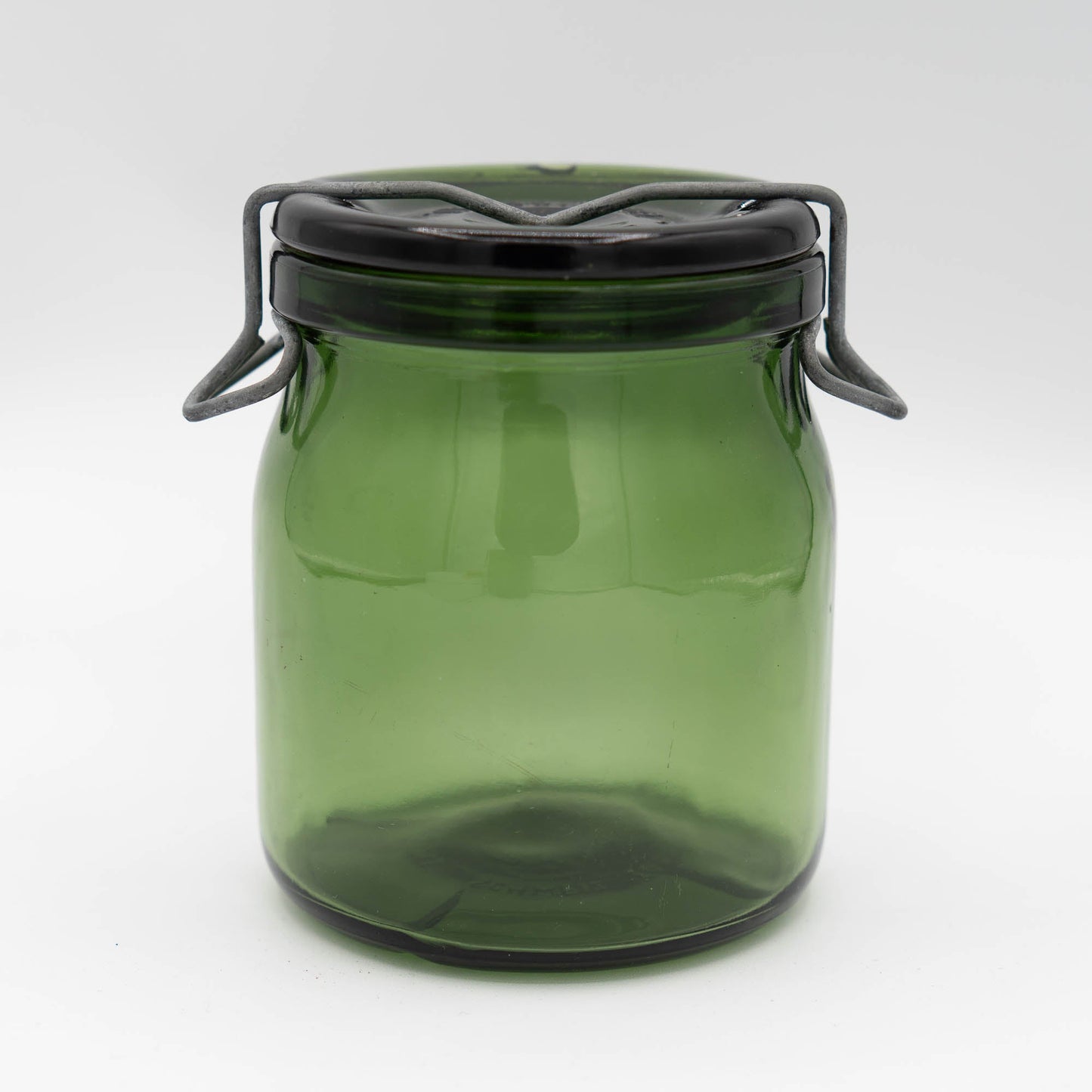
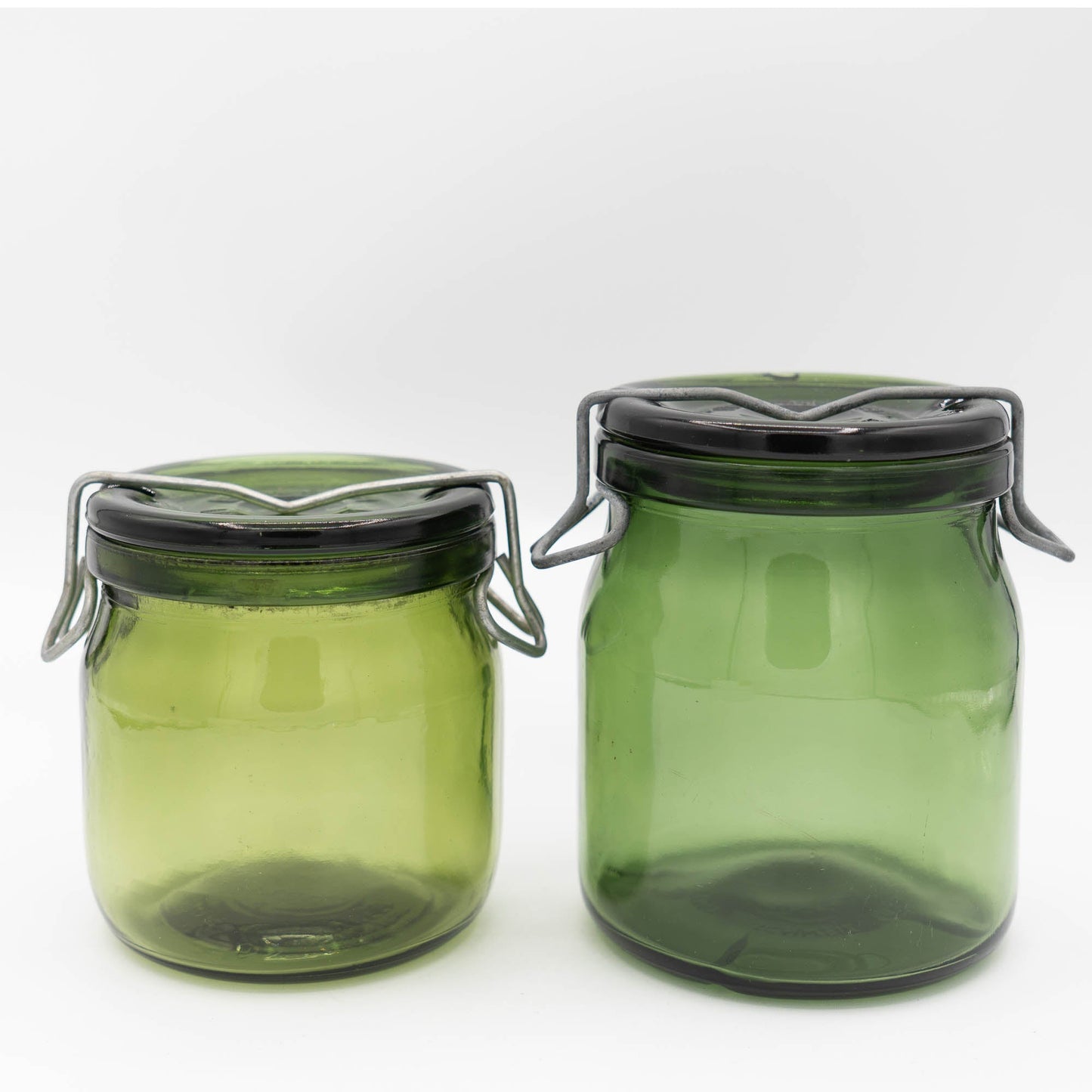
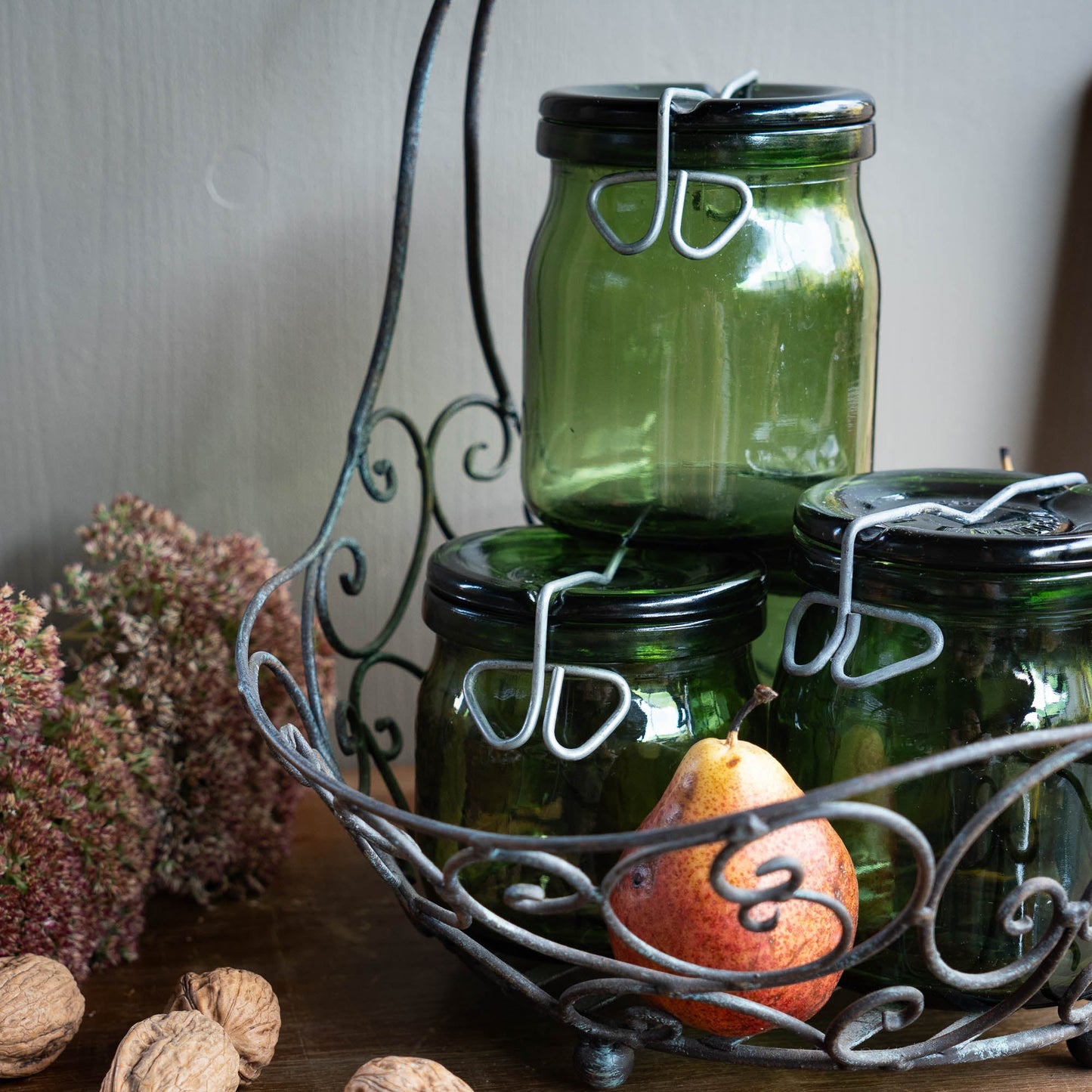
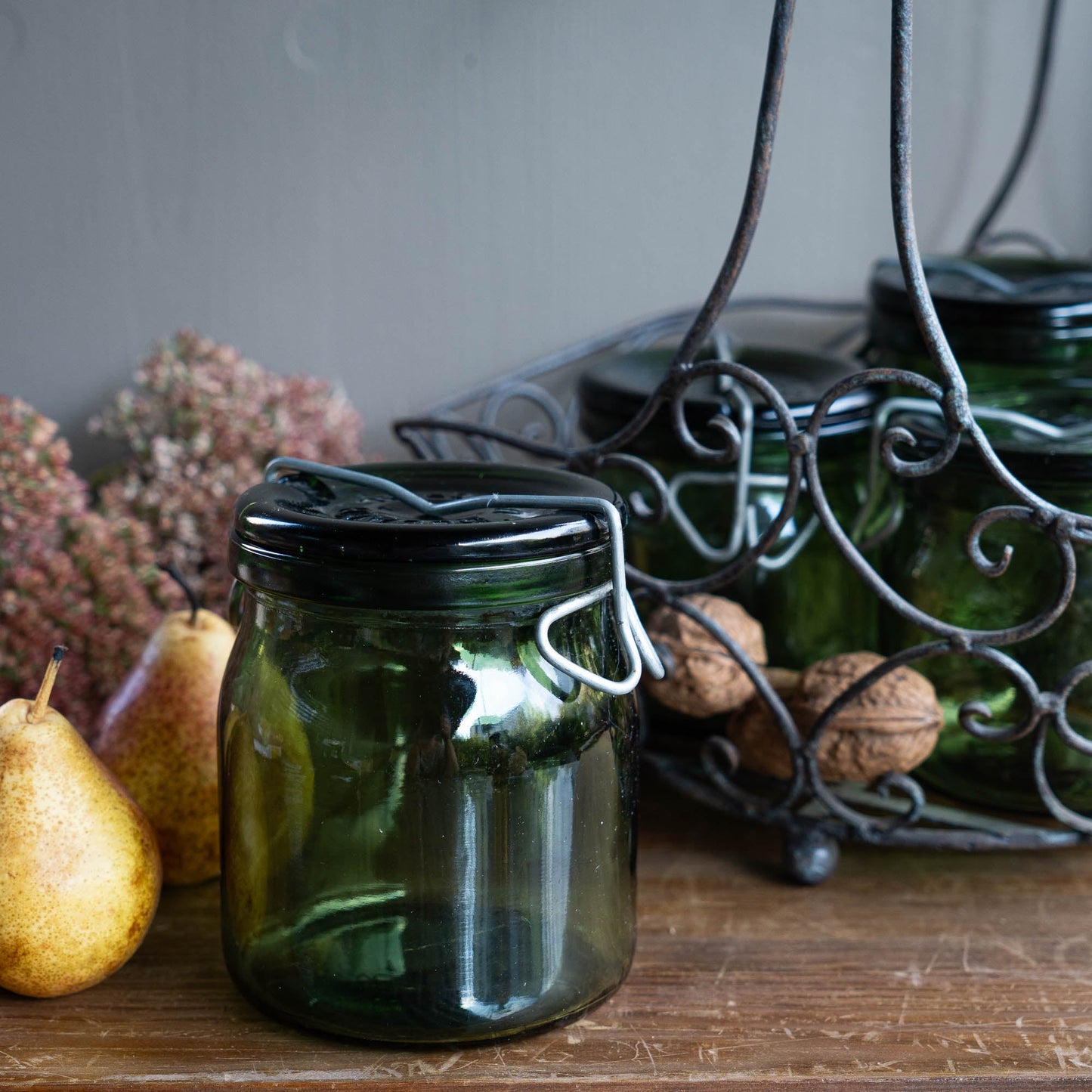
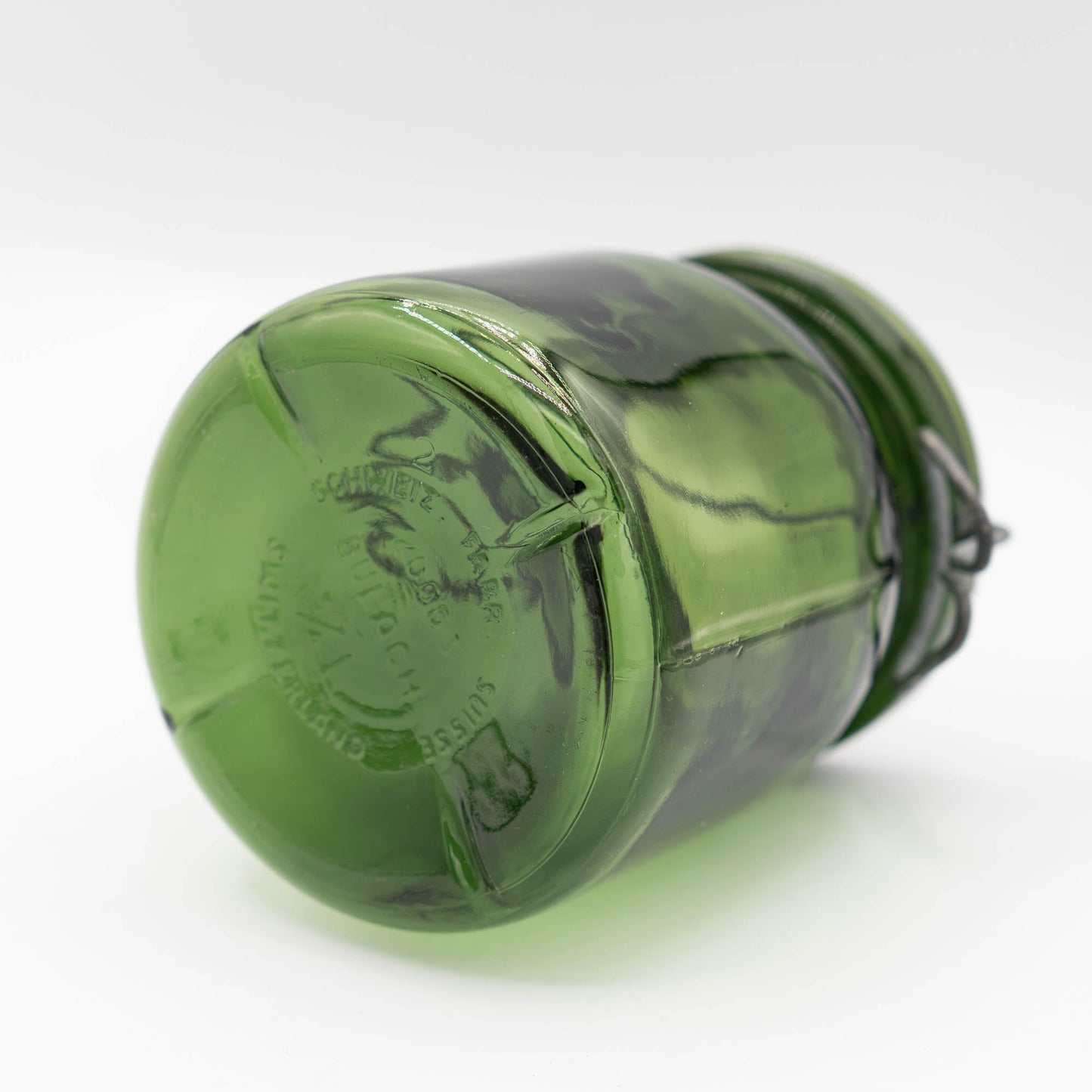
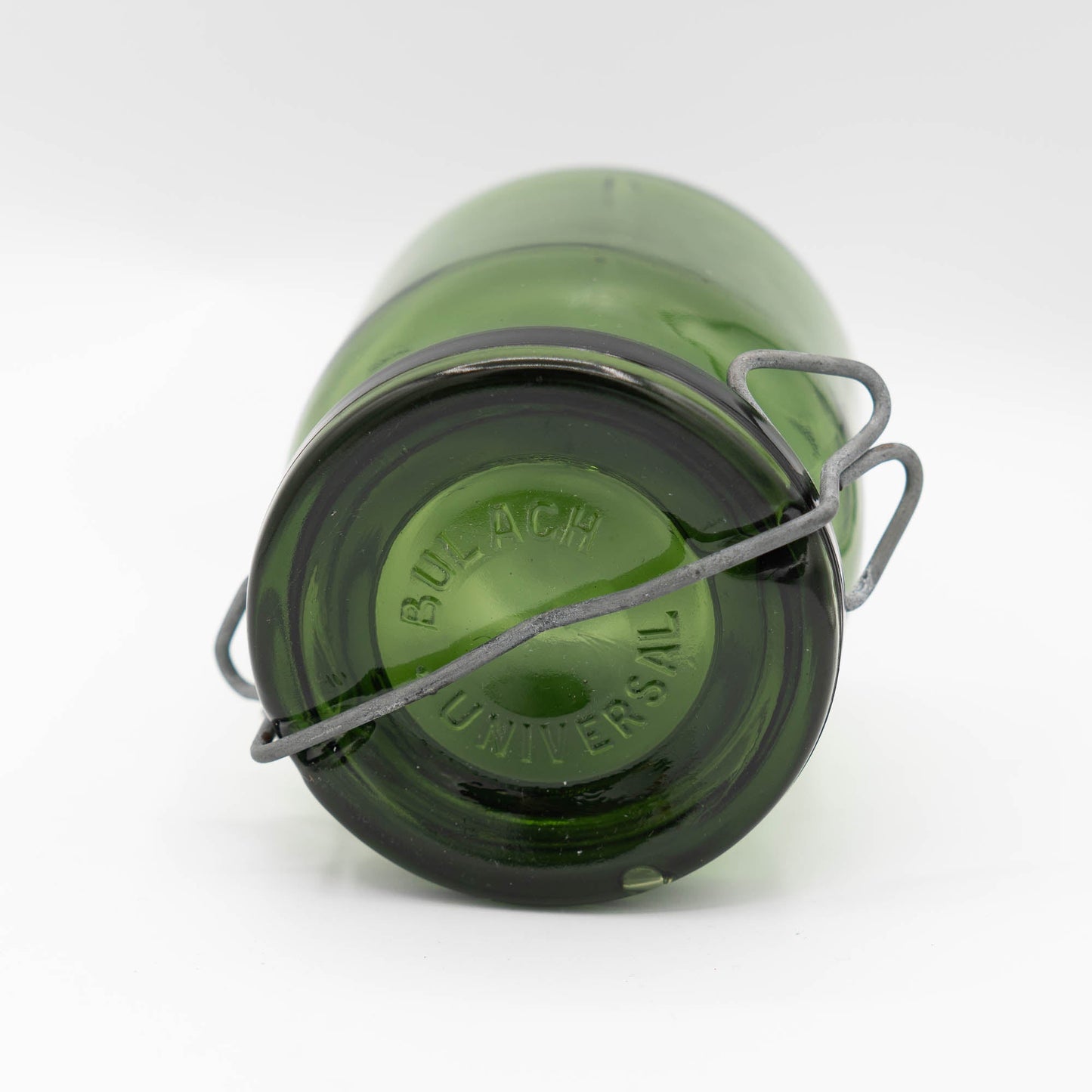
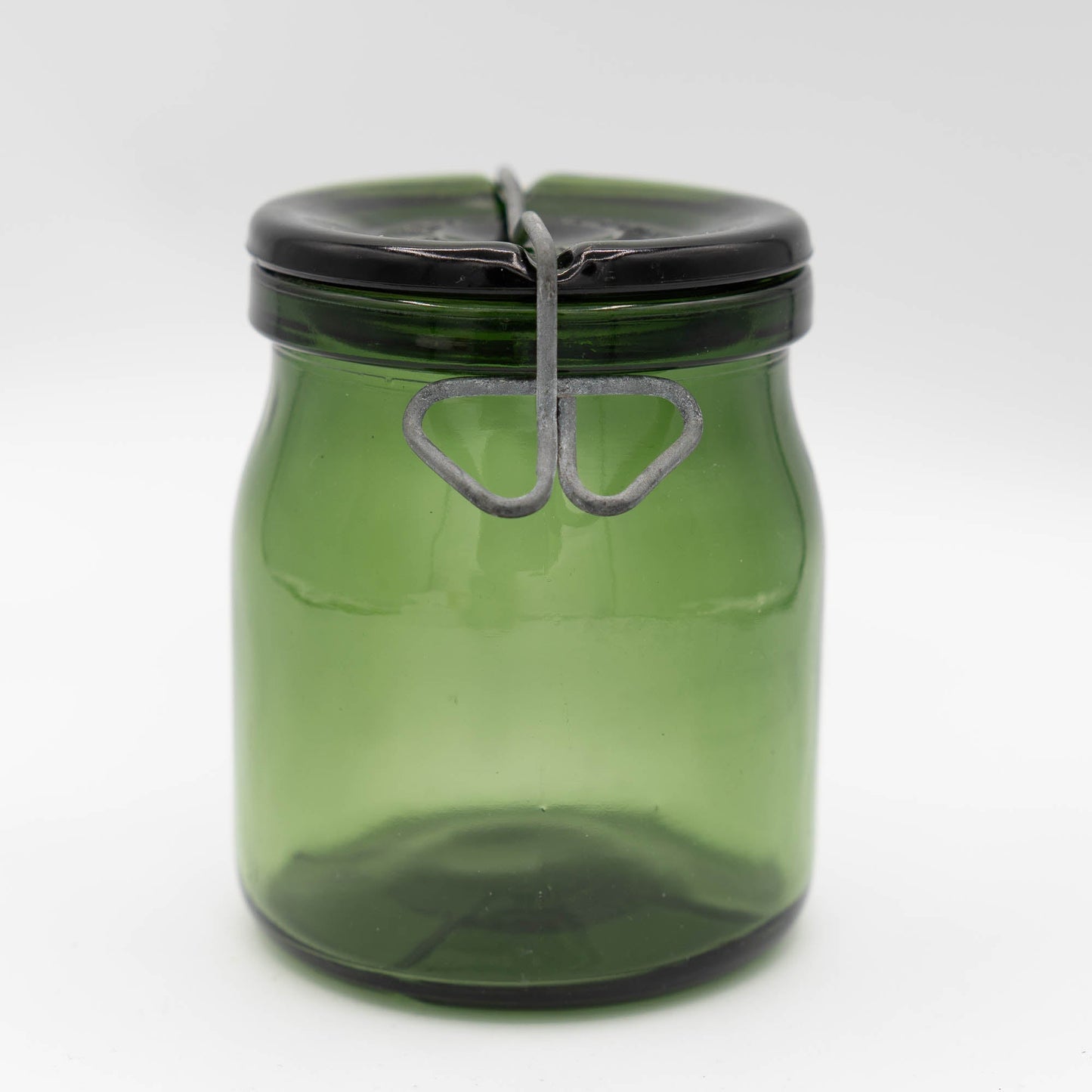
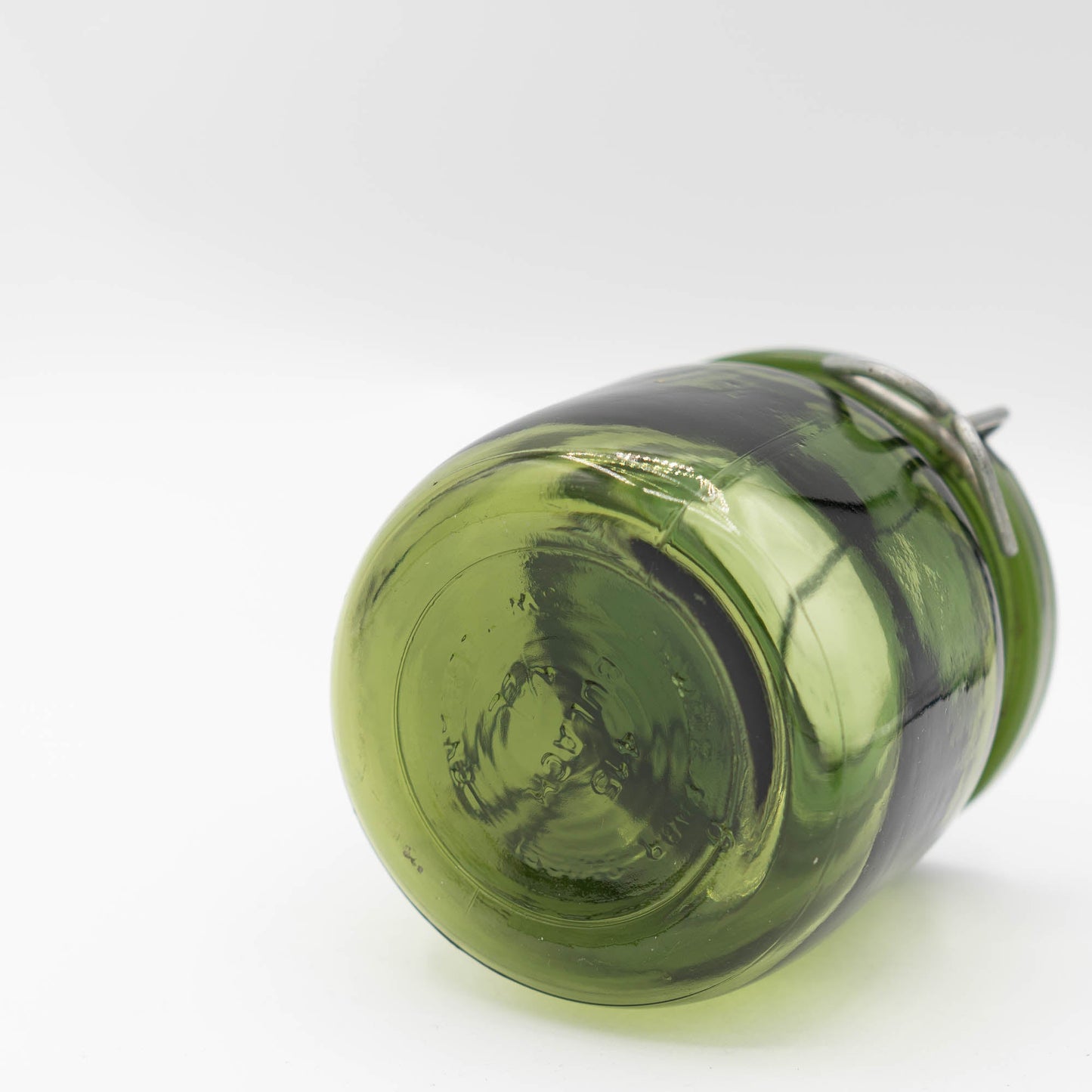
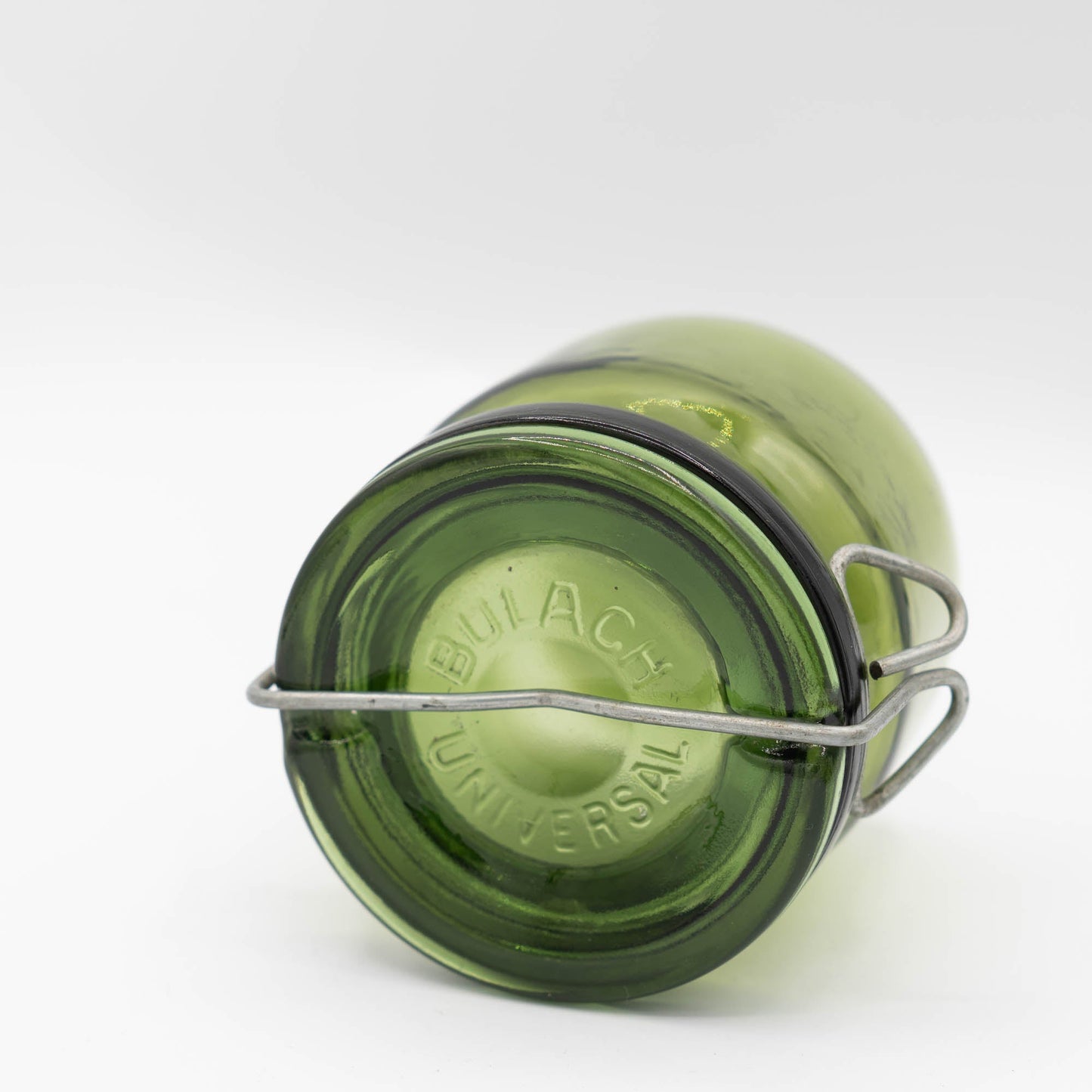
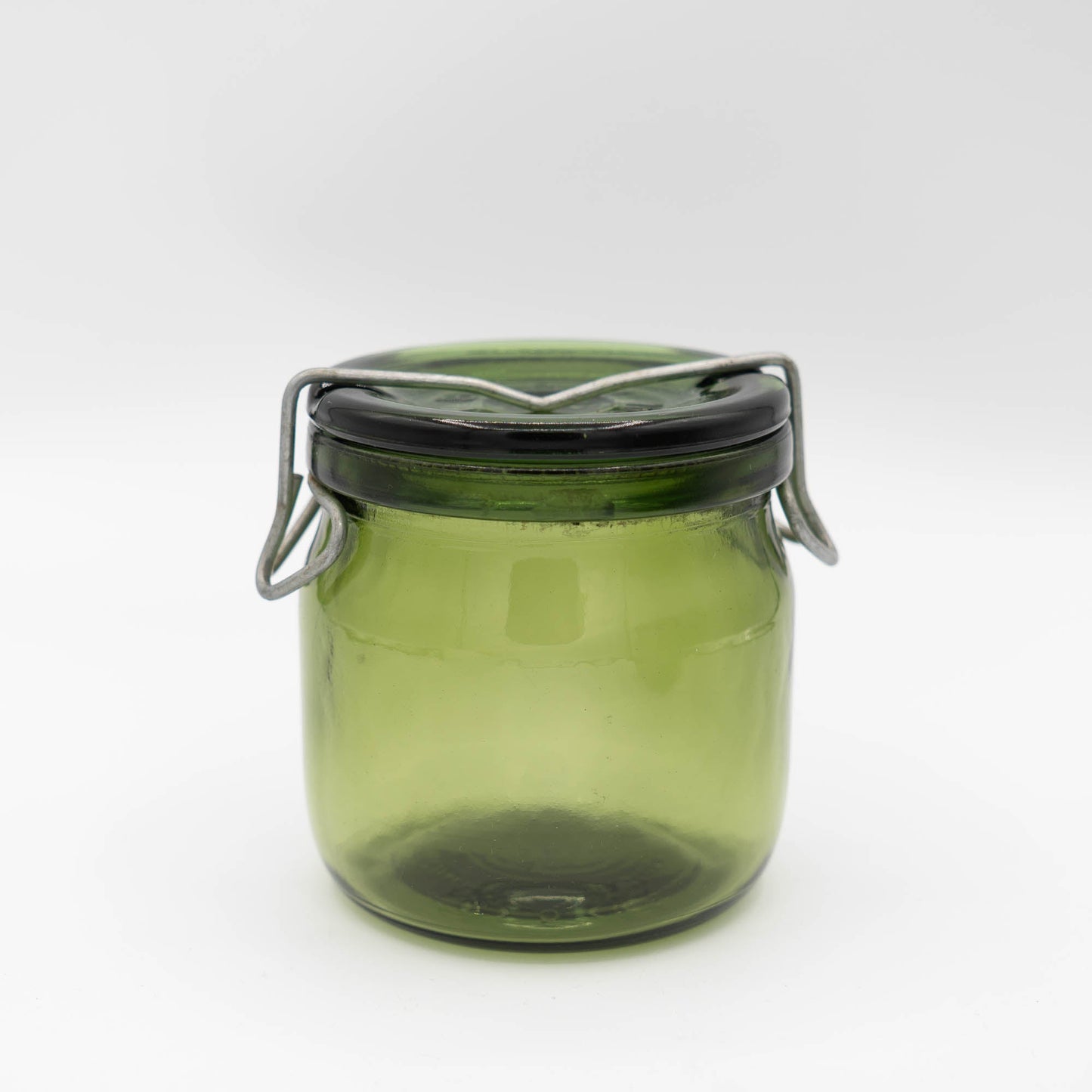
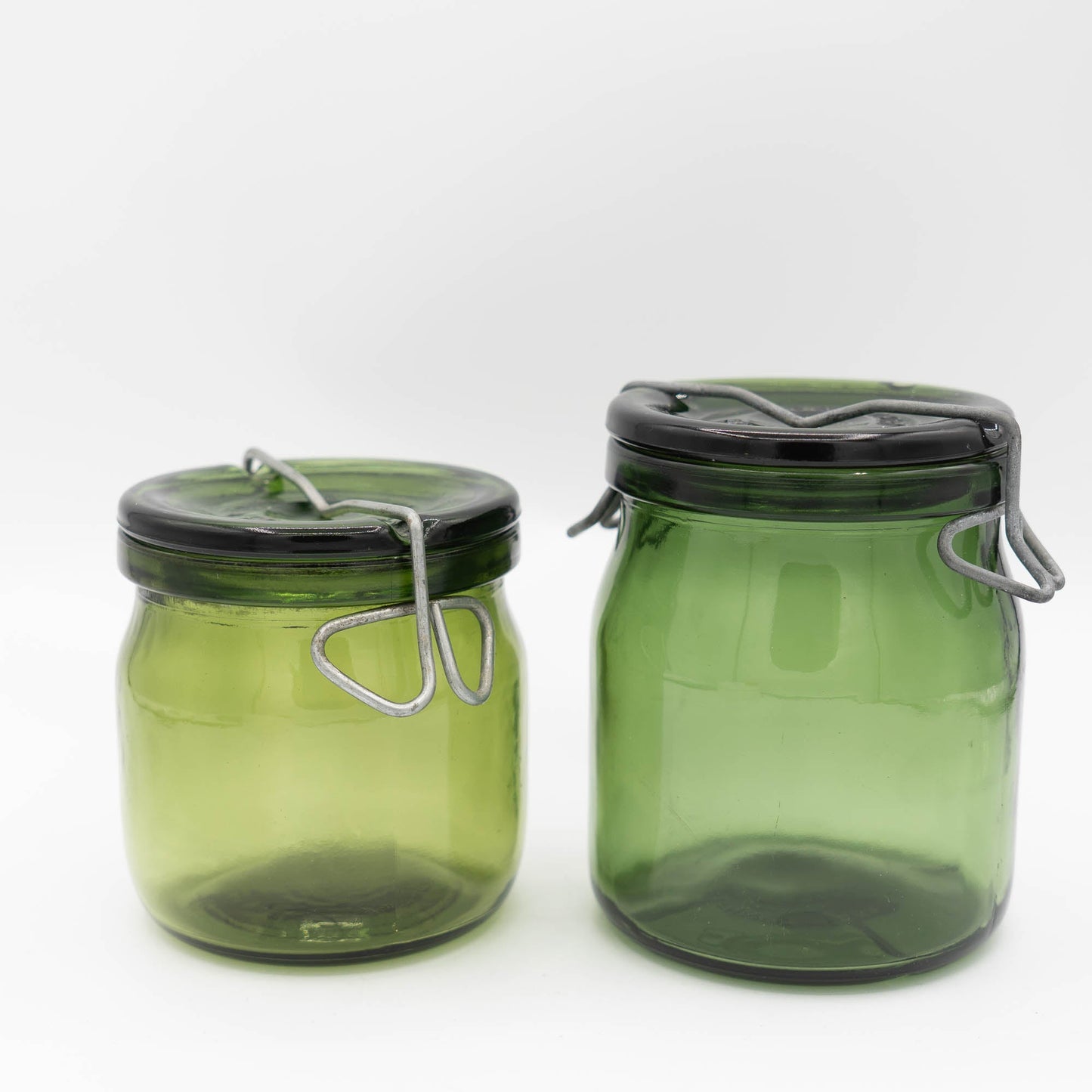
Origin & Maker
Bülach Glas, founded in 1860 in Switzerland, became renowned for its high-quality glassware, combining durability with elegant design. The company produced a wide range of products, including tableware, bottles, and the iconic green storage jars of the 1940s. These thick, sturdy jars, made from iron oxide-tinted glass, were essential household items used for preserving food and dry goods. Their signature green color not only added aesthetic charm but also protected contents from sunlight.
During the mid-20th century, Bülach Glas played a significant role in Swiss homes, embodying the country’s values of craftsmanship and quality. Today, their green glass jars are highly sought after by collectors, valued for both their practical use and vintage appeal. These jars represent a timeless design and a connection to Switzerland’s rich industrial heritage, making them a perfect addition to any vintage-inspired kitchen or collection.
Blog posts
View all-

A Serendipitous Morning at the Rue de Bretagne ...
There are few joys in life that match the thrill of stumbling upon a hidden treasure, and for me, flea markets hold that magical allure. One of my favourite flea...
A Serendipitous Morning at the Rue de Bretagne ...
There are few joys in life that match the thrill of stumbling upon a hidden treasure, and for me, flea markets hold that magical allure. One of my favourite flea...
-

Emile Bourgeois and "Le Grand Dépôt" in Paris
Recently, I found this stunning Sarreguemines wash set. It was at the Brocante in Belfort, France. On this day, we had got up at 4 AM to be there in...
Emile Bourgeois and "Le Grand Dépôt" in Paris
Recently, I found this stunning Sarreguemines wash set. It was at the Brocante in Belfort, France. On this day, we had got up at 4 AM to be there in...
-

The Legacy of Robert Haviland: A Journey from N...
The story of Robert Haviland porcelain is one of artistry, transatlantic ambition, and enduring heritage. It begins in the mid-19th century when David Haviland, an enterprising New Yorker, founded Haviland...
The Legacy of Robert Haviland: A Journey from N...
The story of Robert Haviland porcelain is one of artistry, transatlantic ambition, and enduring heritage. It begins in the mid-19th century when David Haviland, an enterprising New Yorker, founded Haviland...














